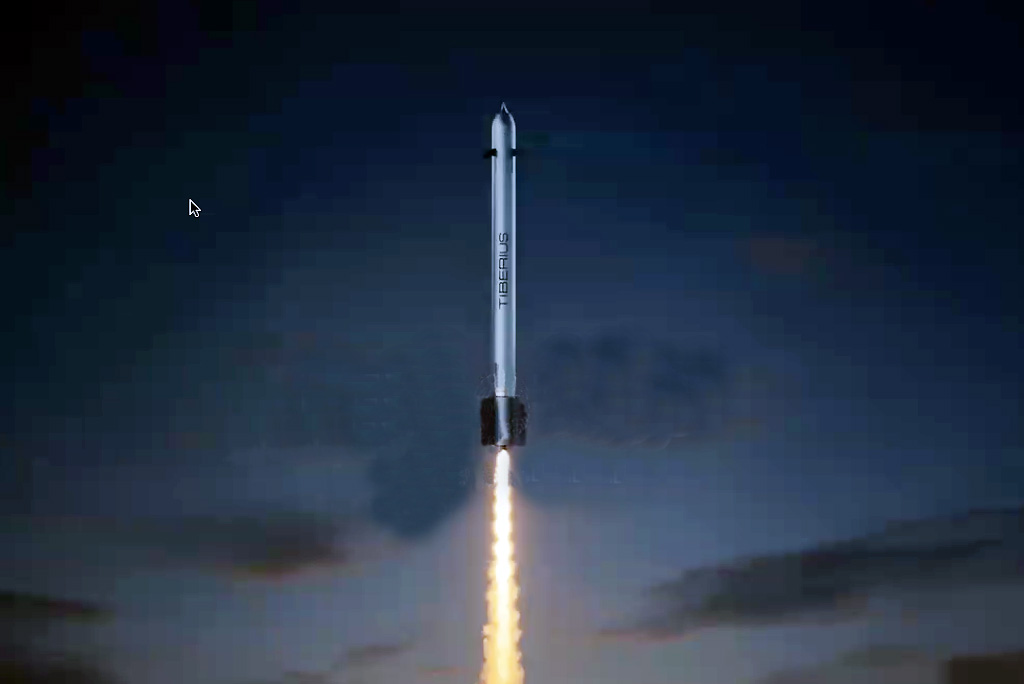
Tiberius Aerospace: beyond the Sceptre 155 munition, ground-launched missiles, and lethality evaluation software
At the Future Artillery conference organised by Defence iQ Tiberius Aerospace unveiled its Sceptre 155 mm long range guided ammunition. In a briefing to media the US-UK company gave some hints on what we should expect in the years to come in terms of new products, a ground launched missile, the Invictus, with its launch system the Vault, being the new future weapon system, while the GRAIL software tool will allow military an industry to properly evaluate weapon systems cost-effectiveness

The first new product in the pipeline, which should be officially unveiled in 2026, is named Invictus. It is a multi-mission strike missile with a 200 km range carrying a payload which mass can vary between 8.5 and 24 kg, over a mass at launch of 190 kg. The new missile will be 2400 mm long, with a 165 mm diameter, and will fly at Mach 3.5 hitting the target within a CEP of around 5.5 metres. In fact, metrics may vary as the Invictus is even more modular than the Sceptre; “the entire payload and solid fuel booster can be variable-sized and can be screwed together and reconfigured,” Chad Steelberg explained, adding that this can “give you different payload, different ranges, mass manufacturing of components being modularly compatible.”

In the same presentation Tiberius Aerospace also unveiled the Vault, an autonomous vertical launch system developed for the Invictus missile, which EDR On-Line understands being also known as TRM 200G. This modular, containerised launch system is battery powered and can be provided in different configurations, respectively for 6, 12, 24 and 60 missiles. Battery powered, no more details were provided but it is to assume that a data link allows managing the system from a remote location, feeding the missiles with target grids, mission profiles and launch orders. Missiles can be launched at a rate of one every two seconds. This allows “deploying almost 500 kilogrammes of payload to 200-kilometre range,” the CEO underlined.
The 60-missile version, known as Vault 60, is 2.99 metres long, 2.44 metres wide and 2.90 metres high, and has a mass of 12,100 kg.

No more details were provided on the Invictus TRM 200G missile, however the image shown in the presentation features a front section very much like that of the Sceptre that, added to the similar speed, allows thinking of the adoption of a ramjet propulsion solution also on this new weapon system. Being ground-launched from a canister rather than from a barrel, and to attain the minimum Mach 2 speed to ignite the ramjet Tiberius Aerospace opted for a solid fuel booster, which explains the difference between the missile length and the container height. Shortly after leaving its launch canister the missile will reach the critical speed, it will fall apart, and the ramjet will be ignited to accelerate the Invictus at cruise speed.
The Vault is fully ruggedised, it is IP68-rated, which means dust tight and protected against the effects of continuous immersion in water (no indication on duration and depth being provided), the battery ensures a three-year autonomy, a solar panel solution is proposed as option to further extend that limit.
EDR On-Line understood that the Invictus/Vault system will provide a solution that will have a cost one order of magnitude lower compared to missiles of the same class.

The last product currently under development is not a physical one; GRAIL stands for Generative Real-time Artificial Intelligence Lethality, and it is a software tool that allows conducting lethality analysis, EDR On-Line understanding that it was firstly developed for in-house evaluation and for producing Tiberius Aerospace product roadmaps.
Tiberius Aerospace considers that metrics mostly used current to evaluate weapons efficiency, mostly based on CEP and warhead lethality, are not the right ones, proposing instead the CELS method, for Cost Effect Lethality Scores, which take in count what is the best and the cheapest weapon that can be used, both from a human and logistical overhead standpoint, from a manufacturing cost standpoint, to guarantee a 95% kill rate. As an example, Chad Steelberg mentioned the need to destroy a hardened target, which needs a direct hit to be destroyed, within range of conventional artillery. “Thinking about in terms of CELS, we must shoot over 260 traditional shells to destroy it, whole we need only two Sceptre to do the same.” With an average cost per shell of 3,300 US$, compared with two rounds at some 52,000 US$, using SP howitzers firing conventional ammunition will cost 9 to 10 times more.
Of course, GRAIL take in count many more parameters and allows to iterate simulations to optimise weapon systems development, weapon systems acquisition and weapon systems use, potential customers being both military and industry.
Invictus, Vault and GRAIL will be officially launched from 2026 on, more details becoming available at that time.
Images courtesy Tiberius Aerospace


